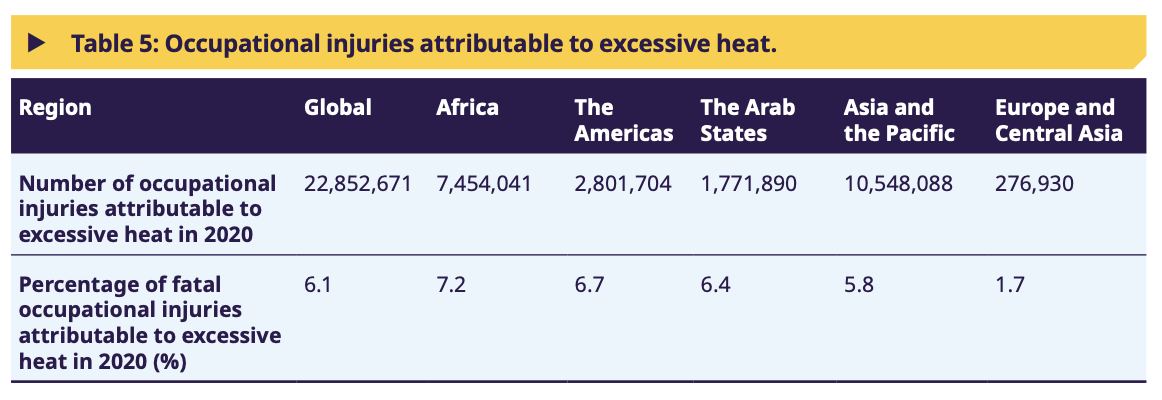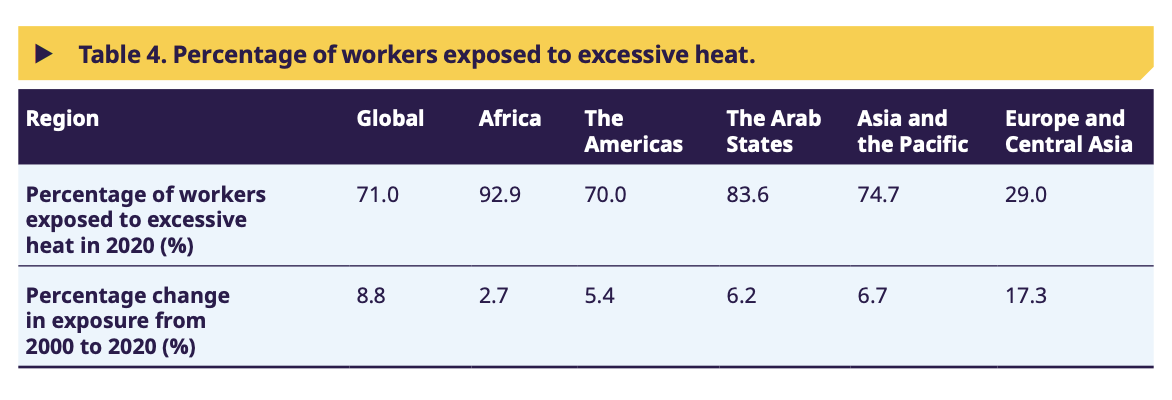
'Heat is an invisible force - a silent killer,' ILO report warns

Occupational injuries due to excessive heat reached 22.8 million 2020, according to the International Labour Organisation (ILO).
The ILO's latest report found that 6.1% out of the heat-attributed injuries in 2020 were also fatal.
"Heat is an invisible force - a silent killer," the report read. "As record-breaking temperatures continue across various regions, more workers than ever before are losing the fight against excessive heat."
The Asia and the Pacific region registered the highest occupational injuries attributable to excessive heat with 10.5 million cases, where 5.8% were fatal.
Africa, on the other hand, registered the highest percentage of fatal occupational injuries with 7.2% out of 7.4 million injuries, according to the report.

Source: ILO's Heat at work: Implications for safety and health
Meanwhile, the report also found 71% of employees across the world are exposed to excessive heat in 2020, 8.8% higher than the data recorded in 2000.
Africa, the Arab States, and Asia and the Pacific regions logged above average percentage of workers who are exposed to heat stress, according to the report.
Africa had the highest exposure levels with 92.9%, the Arab States recorded 83.6%, while Asia and the Pacific logged 74.7%.
Europe and Central Asia, on the other hand, registered the greatest increase in excessive heat exposure with a 17.3% hike between 2000 and 2020.
"This is almost double the global average increase," the report read.

Source: ILO's Heat at work: Implications for safety and health
ILO Director-General Gilbert Houngbo urged protection for workers from stress year-round amid rising global temperatures.
"Excessive heat is creating unprecedented challenges for workers worldwide year-round, and not only during periods of intense heatwaves," Houngbo said in a statement.
According to the report, implementing measures to prevent occupational injuries related to excessive heat could save over US$361 billion globally.
For most impacted low- and middle-income economies, this is already equivalent to bout 1.5% of the national GDP.
"This is a human rights issues, a workers' rights issue, and an economic issue, and middle-income economies are bearing the biggest brunt," Houngbo said. "We need year-round heat action plans and legislation to protect workers, and stronger global collaboration among experts to harmonise heat stress assessments and interventions at work."